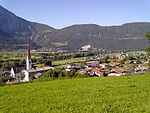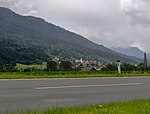Tiroler Volksschauspiele
Austrian building and structure stubsEuropean theatre (structure) stubsTheatres in AustriaTourist attractions in Tyrol (state)
Tiroler Volksschauspiele is a theatre in Austria.
Excerpt from the Wikipedia article Tiroler Volksschauspiele (License: CC BY-SA 3.0, Authors).Tiroler Volksschauspiele
Eduard-Wallnöfer-Platz,
Geographical coordinates (GPS) Address Website Nearby Places Show on map
Geographical coordinates (GPS)
| Latitude | Longitude |
|---|---|
| N 47.307267 ° | E 11.0721 ° |
Address
RathausSaal Telfs
Eduard-Wallnöfer-Platz 5
6410
Austria
Open on Google Maps










